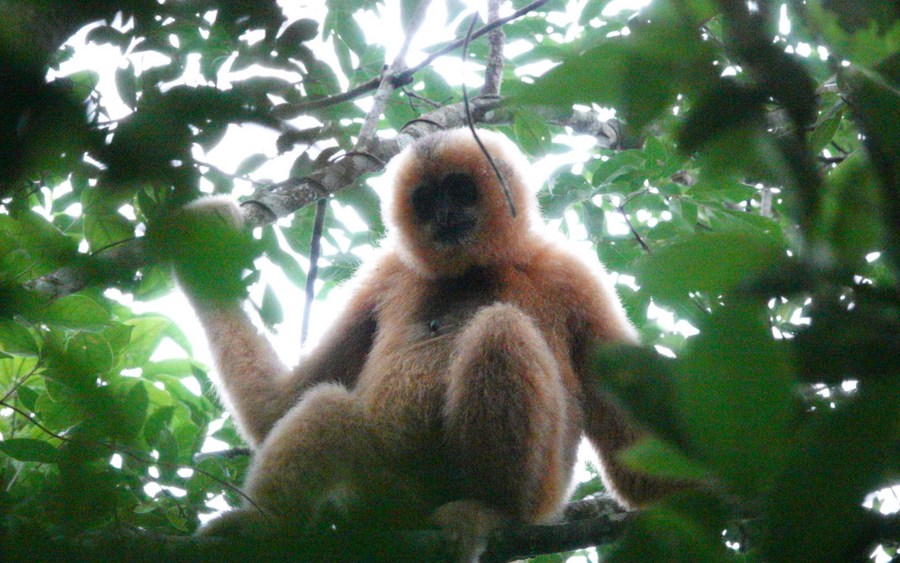Efforts pay off, Hainan gibbon population grows


This photo taken on Oct 14, 2023 shows a Hainan gibbon in the Bawangling area of Hainan Tropical Rainforest National Park, South China's Hainan province. [Photo/Xinhua]
Since its pilot establishment in 2019, Hainan Tropical Rainforest National Park has recorded the discovery of 75 new species, including nine previously unrecorded in China, according to newly released data.
The population of the park's flagship species, the critically endangered Hainan gibbon, has grown from 29 individuals in four groups in 2018 to 42 individuals in seven groups, park officials said. The Hainan gibbon is considered the world's most endangered primate, found exclusively in the park's Bawangling Mountain area.
Han Wentao, from the Bawangling bureau of the park's administration, attributed the population increase to measures such as installing artificial ropes to reconnect fragmented habitats caused by landslides. "Typhoons caused landslides that separated once-connected habitats. We installed these ropes to see if the gibbons would use them," Han told CCTV in an interview.
The gibbons, classified as a national first-class protected species, are considered an indicator of the rainforest's ecological health. Their slow reproductive cycle — they reproduce only once every two to three years — makes population recovery particularly challenging, Han said.
"They are not only using the ropes now but also trees, vines and bamboo, which have regrown. The next step is planting trees that are food sources to connect their fragmented habitats further," he added.
Researchers have also turned to advanced technology, including sound and AI-based facial recognition, to study the gibbons' behavior.
He Cong, a staff member at the Hainan Smart Rainforest Center, said plans are underway to deploy 4,000 to 5,000 cameras across the park by next year, enabling more precise tracking of animal activity.
Rangers patrolling the park also reported increased sightings of rare species such as the Chinese pangolin, round-nosed giant lizard and small-clawed otter. In September, a rare plant species named Thismia jinzun, or "golden cup water jade cup," was documented in an international botanical taxonomy journal. The fragile plant thrives only in undisturbed environments, highlighting the importance of conservation efforts.
"Even slight disruptions, like a fallen tree, could wipe out the species," said Lu Chunyang, an ecological engineer at the Research Institute of Tropical Forestry, Chinese Academy of Forestry. "The park's effective protection ensures its survival."

Office of the Hainan Free Trade Port Working CommitteeNo. 69 Guoxing Avenue, Meilan District, Haikou City, Hainan Province, 570203, China

hnshgb_xchch@sina.com
Contact Us
- Latest News
- Video News
- Specials
- Press Release
- Upcoming Events
What's New in Hainan
- Industrial Park
- Tax
- Trade
- Investment
- Entry & Exit
- Finance
Invest in Hainan
- Weather
- Transportation
- Health Care
- Attractions & Food
- Fitness & Sports
- Arts & Culture
Live in Hainan
- Copyright © 2020 Hainan Free Trade Port
- Qiong ICP 19005356
- All Rights Reserved





